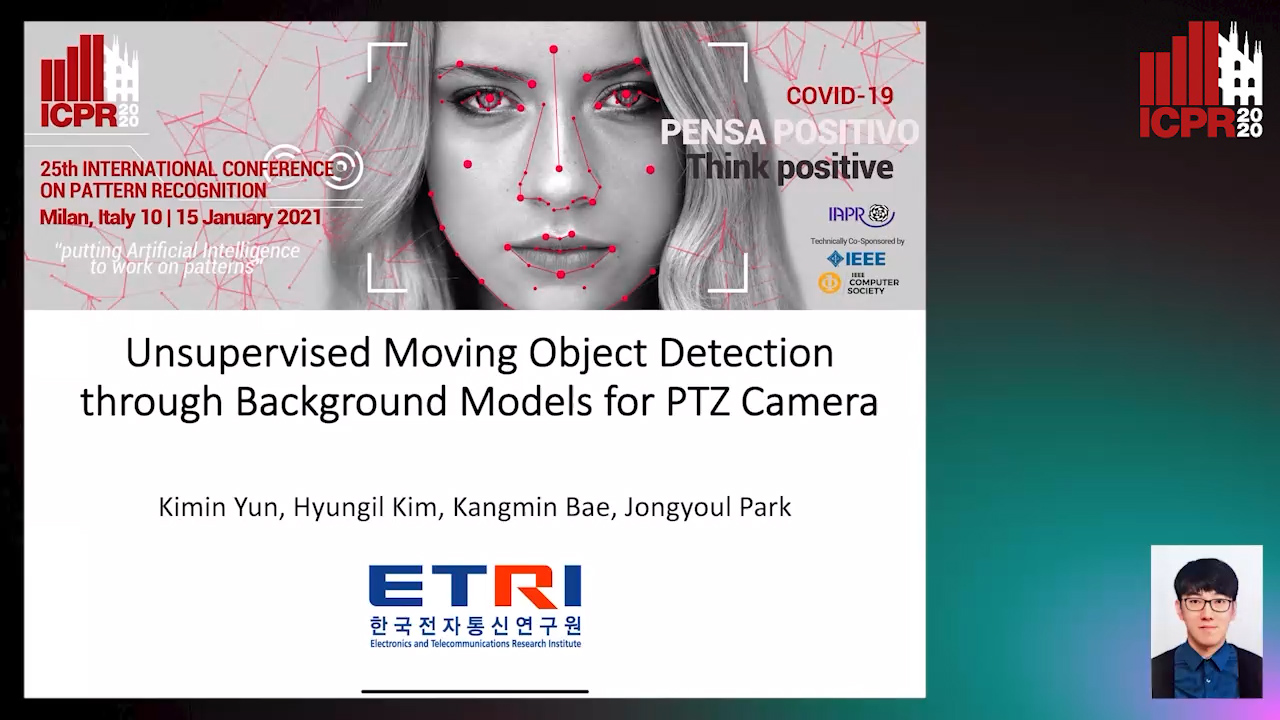Kangmin Bae
Paper download is intended for registered attendees only, and is
subjected to the IEEE Copyright Policy. Any other use is strongly forbidden.
Papers from this author
Unsupervised Moving Object Detection through Background Models for PTZ Camera
Kimin Yun, Hyung-Il Kim, Kangmin Bae, Jongyoul Park

Auto-TLDR; Unsupervised Moving Object Detection in a PTZ Camera through Two Background Models
Abstract Slides Poster Similar
Moving object detection in a video plays an important role in many vision applications. Recently, moving object detection using appearance modeling based on a convolutional neural network has been actively developed. However, the CNN-based methods usually require the user's supervision of the first frame so that it becomes highly dependent on the training dataset. In contrast, the method of finding a foreground, which models a background occupying a large proportion in an image, can detect a moving object efficiently in an unsupervised manner. However, existing methods based on background modeling in a pan-tilt-zoom (PTZ) camera suffer many false positives or loss of moving objects due to the estimation error of camera motion. To overcome the aforementioned limitations, we propose a moving object detection method for a PTZ camera through two background models. In an unsupervised way, our method builds the two background models that have different roles: 1) a coarse background model for detecting large changes, and 2) a fine background model for detecting small changes. In more detail, the coarse background model builds a block-based Gaussian model, and the fine model builds a sample consensus model. Both models are adaptively updated according to the estimated camera motion in the video recorded by a PTZ camera. Then, each foreground result from two background models is incorporated to fill the moving object region. Through experiments, the proposed method achieves better performance than the state-of-the-art methods and operates in real-time without parallel processing. In addition, we showed the effectiveness of the proposed model through improved results of moving object detection through combination with the latest supervised method.